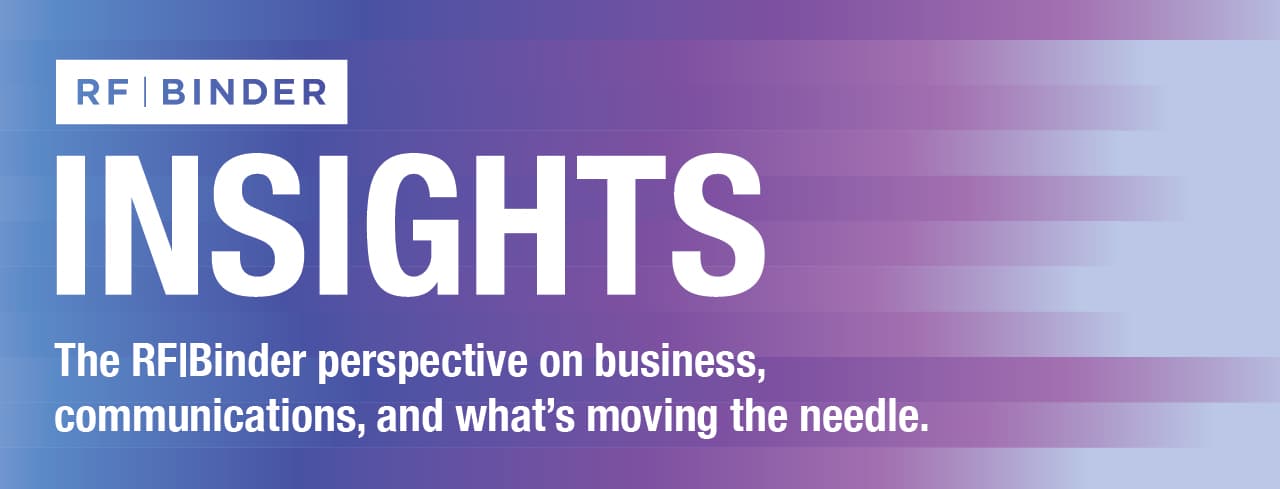Times are tough in the asset management industry. According to a recent McKinsey report, the industry’s global assets under management (AUM) reached a record $132 trillion as of June 2024, but 2023 revenues were flat and profits shrank 5%. PwC, meanwhile, predicts one in six asset managers will disappear by 2027.
“The asset management Industry is more competitive and more consolidated than ever before,” said Clark Davis, director of Marketing at Denver-based Shelton Capital Management. “AUM growth doesn’t just knock at your door these days. It takes a colossal team effort engaging with advisors and investors across product, sales, and marketing teams.”
In such a crowded, “dog eat dog” environment, how can asset managers capture investor attention, earn trust, and secure a greater share of wallet? Marketing communications must play a crucial role. Below are five factors marketers should consider implementing to drive results.
Authentic Content Marketing
By its very nature, an asset management firm sits at the crossroads of thought leadership—whether it’s macroeconomic insights, market trends, investment strategies or behavioral economics.
But think before you write your next white paper, produce a video, or host a webinar. Advisors are inundated with information, so generic content won’t cut it. Advisors are looking for trusted, reliable sources, and establishing that trust comes from demonstrating credibility.
“Years ago, a high rating or strong ranking alone could attract investment flows,” said Richard Miller, senior director of investment product marketing at FLX Networks. “Now, advisors want to understand the thought process behind investment decisions. Authenticity is key. Communicate what makes your approach unique.”
Personalized Investor Engagement
The traditional “wholesale” model that asset managers have used since time immemorial has gone through a sea change in recent years. Marketing and selling investment products to financial advisors and their clients used to be determined by lavish lunches, rounds of golf and conference tchotchkes. But fee compression, shrinking “shelf space” for mutual funds and ETFs, and changing investor expectations has created hybrid distribution models that are led by data-driven marketing.
What hasn’t changed is the need to personalize and customize communications. Lance Peterson, head of distribution at Wakefield Asset Management, uses data to create personalized targeted communications with key platform stakeholders, including research teams and sales heads. Outreach includes quarterly updates, calls, bylined articles, and award announcements to ensure consistent messaging.
“If the market shifts, we want them comfortable with our recommendations, and we work closely with heads of sales teams, ensuring they understand our performance and updates,” says Peterson. “Our outreach is two-pronged: keeping the research team aligned and leveraging sales heads to cascade our message. Communication is timely and includes quarterly updates, calls, and potentially byline articles or awards announcements. It’s about identifying and prioritizing key stakeholders.”
Maximize Marketing Channels
Integrating marketing channels to create a consistent customer experience is essential to providing a seamless experience for customers. It also drives strong sales and marketing results.
“We have worked hard to develop an omnichannel marketing approach with an ever evolving marketing technology stack at our disposal that delivers a consistent prospecting engine,” said Shelton’s Davis. “This holistic process has produced email open rates of over 25% among our highly targeted audiences, higher in-person event engagement, and recognition on the recent eVestment Brand Awareness Ranking report. A major feet for a firm our size.”
Distinct Brand Identity
Developing a distinct brand identity is essential. A competitive analysis will help you know your market, understand competitors, and identify your unique differentiators. Avoid generic terms like “dynamic investment process”—that’s phrasing that many managers use.
Transparency is also vital. “It’s easy to share good news, but real credibility comes from being present even when challenges arise,” FLX’s Miller says. Be upfront, explain issues, and outline your approach to managing them. This builds trust over time. “Transparency and authentic storytelling underpin long-term success in thought leadership and brand building.”
Leverage PR and Media Outreach
Public relations plays a critical role in establishing credibility and expanding brand visibility. A steady stream of press releases announcing new funds, investment milestones, or awards keeps asset managers in the media spotlight.
“These efforts can be extremely valuable for a firm of our size and allow us to punch above our weight and really gain that desired visibility and buzz as a thought leader,” says Davis. “We understand that no media is going to transform our business, but an ongoing presence is priceless in terms of building brand over a long period of time.”
Proactive media outreach should focus on securing interviews, expert commentary placements, and bylined articles in reputable financial publications, says Davis. Executives can enhance the firm’s authority by sharing insights on economic trends, emerging markets, and innovative investment strategies. Media monitoring tools can help identify coverage opportunities and respond quickly to industry developments.
If you’re looking to create greater impact for integrated marketing and communications, get in touch and let’s have a conversation.

